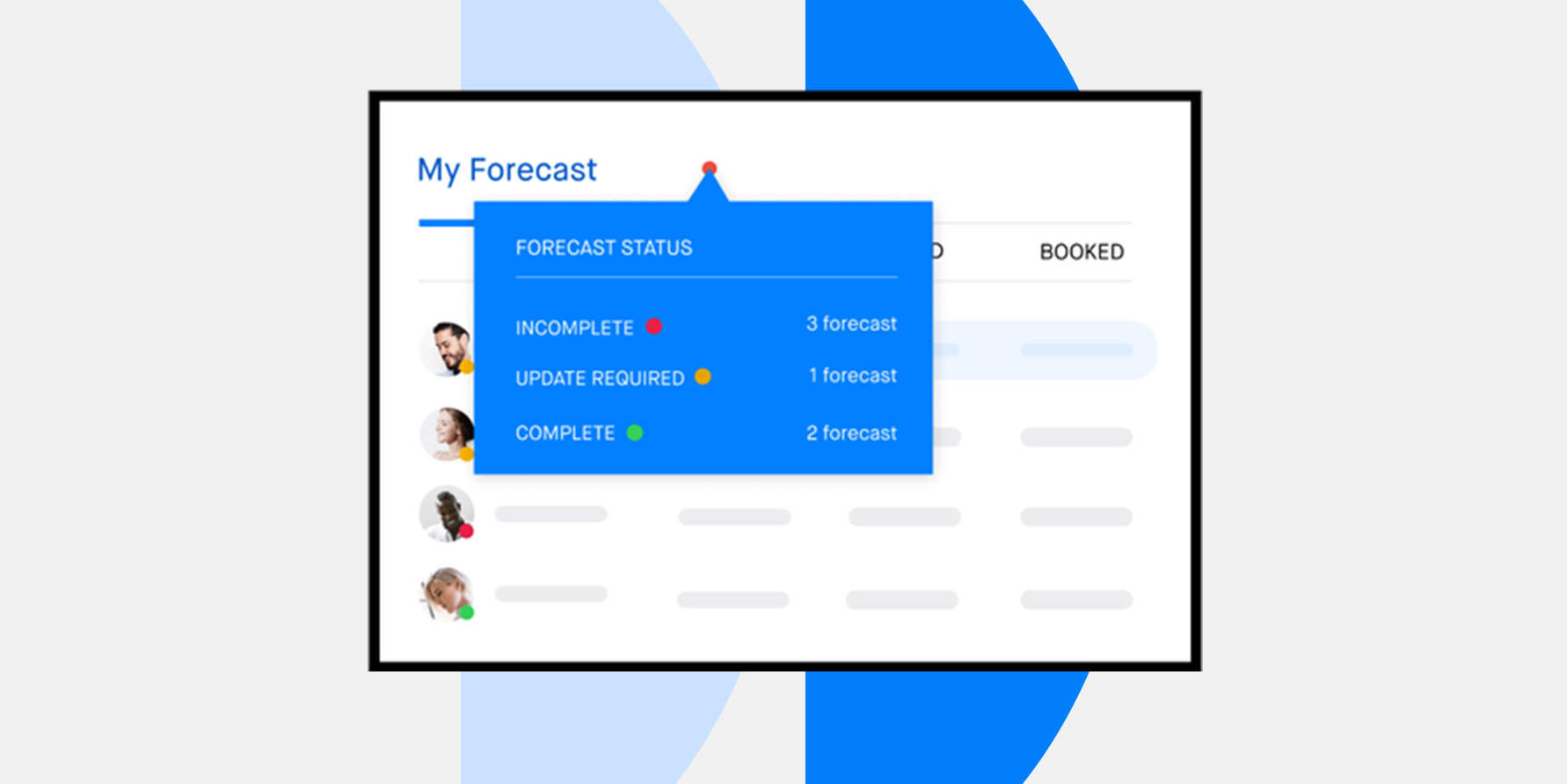Pick a business deadline — a quarter, a year — and the same questions that drive revenue operations rise repeatedly:
- Will we hit our targets?
- How much will we grow?
- What investments will we be able to make, and when?
Well-informed revenue forecasts give organizations the confidence to make important investments at the right time, including hiring, marketing, and research and development. Achieving an accurate sales forecast requires a range of inputs, including up-to-date insights around attainment, pipeline health, sales and marketing activity, and prospect engagement.
Artificial Intelligence can be a valuable tool for this process when properly used and understood. Taking control of revenue operations with AI means powering insights that drive action, which leads to predictable revenue. But common misconceptions can prevent leaders from fully harnessing the power of AI in forecasting.
Here’s what you need to know about AI to help you better leverage this technology in your business.
Myth #1: AI should tell me exactly what will happen
Reality: AI offers guidance. It’s not your destiny.
AI models analyze large amounts of data for patterns, and then apply those patterns to new data points to make predictions. Business leaders shouldn’t expect perfect, zero-error outputs from AI. AI can achieve low error, but can’t reach no error. Occasional inaccuracies, however, shouldn’t mean losing faith in the value of an AI model. In many business applications, AI insights are best interpreted in the context of additional data points and information, using human judgment to bring all sources together and triangulate toward the right action.
For example, Clari’s AI Projection predicts the amount of revenue that will close by the end of the quarter, based on historical pipeline and attainment patterns. Clari may know the state of your current pipeline, but it wouldn’t know you have a new superstar rep starting next week who’s going to ramp quickly and increase your team’s close rate. In this case, the AI projection gives you helpful guidance as to where you will land for the quarter, and then you can factor in your own judgment about changes in your team to call the most accurate forecast. On average, Clari customers land within 4% of their sales forecasts.
Myth #2: AI goes out the window in uncertain times
Reality: AI can and should be used to navigate uncertainty.
The COVID-19 pandemic is an example of this. Past events and trends might not reliably indicate what will happen in the future of a Black Swan event. For example, an AI time series model using historical demand patterns in 2019 to predict upcoming hand sanitizer demand in the spring of 2020 would be inaccurate.
However, AI can still help in times of uncertainty. Some applications are quite valuable, such as those that support optimizing supply chains, as BCG notes. Clari customers use our AI-generated CRM Score to understand the relative likelihood of closing different deals, and those scores are derived from a deal’s behavior based on information in the CRM, such as how long a deal has stayed in a given stage or whether it has increased or decreased in value. Identifying less healthy deals and their risk factors with the help of AI allows teams to allocate time and effort where it is needed most, which is crucial to optimizing sales execution at a time when outcomes are less uncertain.
Myth #3: AI invades privacy
Reality: AI is only as invasive as humans allow it to be.
It’s easy to feel like AI sees all when ad algorithms constantly serve up highly targeted content online. Those companies know users well because they collect a vast amount of data about them, which their algorithms use to show users highly relevant content. The algorithms themselves do not have an inherent sense of how invasive they should or shouldn’t be. They will analyze whatever data they are given, regardless of what it contains or how it was collected. Humans decide how invasively AI is used by choosing what data to collect and how to apply model outputs.
Clari customers use our AI insights for the purposes of enhancing their revenue operations. Because customers’ data privacy and security is of utmost importance, we consider the implications to users’ privacy as part of our development to avoid being invasive. This includes secure integrations with their systems to collect only the agreed upon data that is relevant for revenue operations. Additionally, we provide options for both company policy implementation or individual opt-in.
Myth #4: AI is a black box
Reality: Many AI models provide results that can be explained.
In a black box model, an algorithm determines how the variables in a dataset are combined, without constraints or human intervention. This produces math so complex that no human can understand how the model arrived at its prediction. Black box models are common, and they can produce strong results. However, when they aren’t accurate, it’s difficult to understand why. That makes them harder to improve upon and trust for high stakes use cases. It’s understandably difficult for someone to put faith in a prediction when they don’t understand the reasoning behind it, especially when they are using those results to make a business decision.
But black box solutions aren’t the only type of AI model. Interpretable AI models can be just as accurate, according to the Harvard Data Science Review, and they provide more information on the reasoning behind outputs, including how important different variables are in generating the predictions. This is particularly valuable in business applications, where understanding the factors behind a prediction can point you toward the right actions. For example, when trucking companies use AI to predict breakdowns, according to the trade magazine FleetOwner, knowing the specific factors that signal an impending breakdown helps them take preemptive measures to avoid it.
At Clari, we prioritize explainability in our AI insights to support informed actions and decisions. For example, when a salesperson sees the recent trends that caused a CRM Score to drop, they can more easily identify the right next steps to turn the deal around. When they understand how Clari arrived at the AI Projection for their territory, they can better decide how to adjust their forecast to ensure they submit an accurate number.
Myth #5: I need to build a data science team to use AI in my business
Reality: You can leverage AI in your business with the right tools.
Unless AI is a core pillar of your company’s offering or strategic advantage, chances are investing in external tools targeting specific business problems will be a faster path to value than building an internal data science team. External partners bring expertise that can take a long time to build up internally, and they provide dedicated training and support resources that are critical to driving adoption.
When it comes to the problem of achieving predictable revenue, hundreds of organizations rely on Clari for AI insights to better understand the state of their businesses and identify areas of risk - no internal data scientists required. In a matter of weeks, customers can get up and running drawing on understandable projections and insights to support accurate forecasts and efficient sales execution.
AI technology has become more advanced and more widely available. When it comes to revenue operations, AI gives sales, marketing, and customer success leaders greater visibility into what’s happening in their businesses and what to expect.
Sign up for Clari’s Future of Forecasting Keynote event to learn more about how Clari and AI can boost your sales power. Register today.


